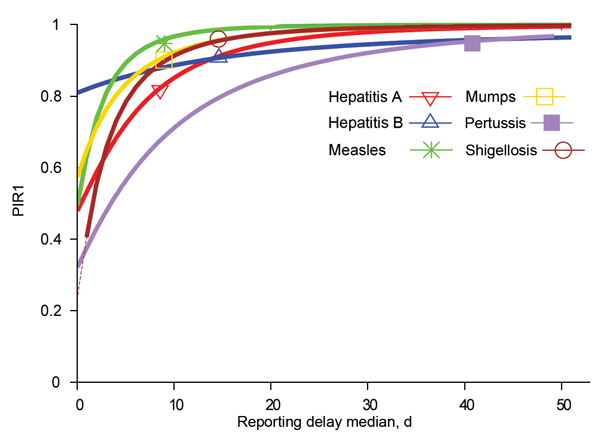Volume 21, Number 2—February 2015
Research
Quantifying Reporting Timeliness to Improve Outbreak Control
Figure 6

Figure 6. PIR1, depending on reporting delay median for the indicated diseases and assuming standard deviation equal to median value. Thick lines show reporting delay medians for which there is no outbreak control. Thin dashed lines would show reporting delay medians that bring diseases within the outbreak condition (R × PIR1<1), but they are not present because even with extremely short delays it is not possible to fulfill the condition with the studied diseases (except shigellosis). Symbols indicate PIR1 evaluated with current reporting delay data. PIR1, expected proportion of cases caused by index case at notification; R, reproduction number.
Page created: January 20, 2015
Page updated: January 20, 2015
Page reviewed: January 20, 2015
The conclusions, findings, and opinions expressed by authors contributing to this journal do not necessarily reflect the official position of the U.S. Department of Health and Human Services, the Public Health Service, the Centers for Disease Control and Prevention, or the authors' affiliated institutions. Use of trade names is for identification only and does not imply endorsement by any of the groups named above.